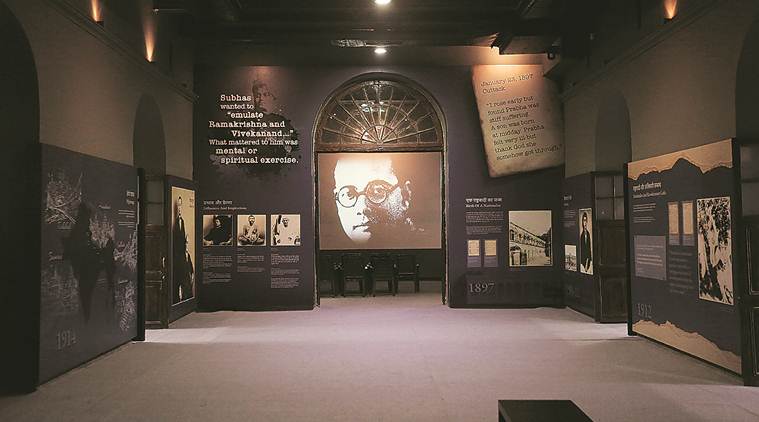
Wall-to-wall flex-sheets tracing Netaji Subhas Chandra Bose’s life and its echoes — from his birth and early life to the INA trial of 1945 — await visitors at the museum inaugurated by Prime Minister Narendra Modi at the Red Fort on Wednesday.
Intended to commemorate Bose’s 122nd birth anniversary, as per the Archaeological Survey of India (ASI) authorities, the new museum stands at the site where the historic trial of three INA generals — Prem Kumar Sehgal, Shah Nawaz Khan, and Gurbaksh Singh Dhillon — was conducted by the colonial state in 1945.
Spread over three floors, the museum unfolds a year-by-year history of events in Bose’s life — starting from his early schooling at Protestant European School to his days at Presidency College, his political journey within the Indian National Congress and his rifts with its central leadership, his journey to Germany, and the history of the Azad Hind Radio and the Indian National Army.
Most of the story of Bose’s life has been communicated through narrative text on flex-sheets, which line the walls across all three floors. Interspersed among the deluge of text are artefacts like badges, medals, weapons and uniforms of INA soldiers — including Prem Kumar Sehgal’s cap and Gurbaksh Singh Dhillon’s army uniform coat buttons.
Some audio-visual material has also been woven in, including archival visual material featuring Bose sourced from the Films Division, and interviews with four surviving veterans of the INA. Dr Kapil Kumar of IGNOU’s history department, who was involved as an expert consultant for this project, said more interviews with veterans will be incorporated over time.
One section in the second floor has been dedicated to songs of the INA — which visitors can choose and play through a touch screen selection — including classics like Kadam Kadam Badaye Jaa composed by Ram Singh Thakuri.
Even as the museum attempts to reconstruct the chronological details of Bose’s life, it is largely silent on the ideological foundations of his political praxis — including his dissent within the INC and alignment with Axis forces during World War II. The only section dwelling on the people and ideas which influenced him is that on his early life.
According to it, his influences and inspirations were Swami Vivekananda, Ramakrishna Paramahansa, and his school headmaster Babu Beni Madhav Das. It adds that during his days at Ravenshaw Collegiate School, “he interacted with sadhus and sanyasis at Jagannath Puri. It was these school days that shaped his mind towards nationalism, social service and religion.”
The inauguration of the museum comes a few weeks after the Prime Minister renamed three islands in the Andaman and Nicobar as Netaji Subhas Chandra Bose Island, Swaraj Dweep and Shaheed Dweep as a tribute to Bose. He also hoisted the national flag at the Red Fort on October 21 last year to mark the 75th anniversary of the Azad Hind government.